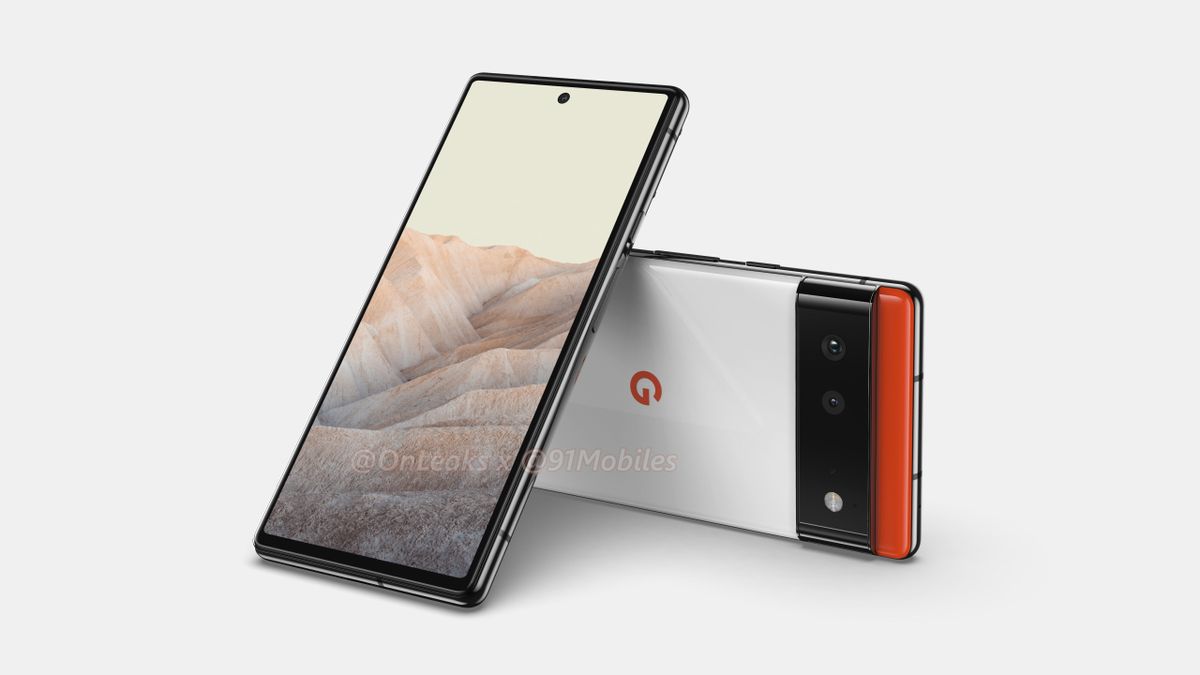Google Pixel 6 rumors: Why I’m worried Google has lost its way
The Google Pixel 6 looks to change so much from the Google Pixel 5 based on recent leaks that it may be hard to tell the two phones are related. What’s less clear is if the Pixel experience is going to survive that kind of overhaul.
While Android enthusiasts have great respect for the Pixel phones’ well-implemented version of Android and its excellent photo post-processing, this hasn’t translated to lots of Pixel sales. The latest leaks for the Pixel 6 claim to show that Google’s taking hardware cues from its rivals despite the strange-looking design.
Arguably it can’t really hurt Google to shake things up so much, but I’m a little sad to see that beyond the aesthetics of the phone, Google looks to be falling more in line with other Android phone makers after five generations of devices attempting something different.
We’ve seen some fascinating leaks for the Pixel 6 recently, most notably the renders provided by Jon Prosser and OnLeaks. These renders show just how much Google is altering the Pixel formula, even if we don’t have a full idea of the phone’s specs yet.
The leaked design, which you can see in the images on this page, looks nothing like any other current Android phone, and that’s a good thing. Android phones have an unfortunate tendency to blend into one another when it comes to design.
With central punch-holes, skinny side bezels, a horizontal bar of rear cameras and a black, white and orange color scheme, the Pixel 6 looks as wild as a concept phone — except Prosser and OnLeaks assure us that it’s the final design you’ll be able to buy later this year.
Going beyond the rumored design, the refreshed exterior points to big internal changes as well. And that gets to the root of my worries that Google is making the Pixel more generic.
Pixel 6’s looming identity crisis
For an example of where Google may be aping Samsung, OnePlus and other leading Android phones , Prosser’s leak says the Pixel 6 will be the first Pixel to have three cameras. For the first three generations of Pixel, Google was adamant that one rear sensor was all it needed to take great photos. Even when Google moved to multiple rear cameras with the Pixel 4, it decided to go with two, an uncommonly small amount for an Android flagship device.

However it’s easy to be suckered into the idea that no matter their price, Android phones need three or more cameras to be taken seriously. Google’s already proven time and again that the Pixel phones can take a snapshot as good as or better than its competitors, routinely placing its devices on the list of best camera phones. If this rumored triple camera is a reality for the Pixel 6, it could herald an end to the convenience and simplicity that defined photography on Google’s phones.
It’s a similar case with phone size. Google was one of the holdouts in the Android market when it came to making phones with screens topping 6 inches. There’s definitely a niche for compact handsets, and it was something that the Pixel did well with its non-XL models. But with 6.4- and 6.7-inch models rumored for the Pixel 6, Google risks losing another unique quality.
Speaking of the XL name, Prosser says this suffix won’t be returning for the Pixel 6, but will instead be replaced by a Pixel 6 “Pro,” similar to the iPhone 12 Pro and many other leading flagships. It makes some sense to adopt the Pro title as that’s a common way to designate the best version of a phone. But it would be another step away from what’s familiarly Google.
Pixel 6 silver linings
While the hardware leaks don’t fill me with confidence, I still have some hope that Google will thread the needle between current Pixels and the theoretical new Pixel. That starts with the software.
Google’s a software-oriented company by nature, and although the Android and Pixel teams won’t be joined at the hip, you’d expect the Pixel 6 will offer the cleanest version of Android 12, just like previous Pixels did.
Another huge rumored change — one that inspires hope rather than fear — is that Google is designing its own chipset for the Pixel 6. Rather than use the same Qualcomm Snapdragon silicon as most other Android phones, Google is reportedly working on a “Whitechapel” chip design of its own. Arguably this is a move that follows Apple’s A Series chips, Samsung’s Exynos chips and others, but the benefit of using proprietary chips is up to Google. With control over its hardware and over Android’s most basic features, the Pixel 6 could be the ultimate Android experience, even if its power can’t match up to the iPhone 13 or Samsung Galaxy S22.
We’ll likely see the Pixel 6 in the fall — in early October, if Google follows recent release patterns. That leaves plenty of time for further leaks and teases to provide a clearer picture of Google’s plans. Based on what’s known for now though, it feels like we’re on the cusp of a whole new kind of Pixel phone, for better or for worse.
It makes sense for Google to adjust its aim toward where smartphone shoppers seem to be spending money. I just hope that Google remembers to keep the Pixel line’s special factors intact as it refreshes it. It’s these that have served the Pixel well since the start, and hopefully a more impressive shell will convince more people to appreciate them.
For all the latest Technology News Click Here
For the latest news and updates, follow us on Google News.

